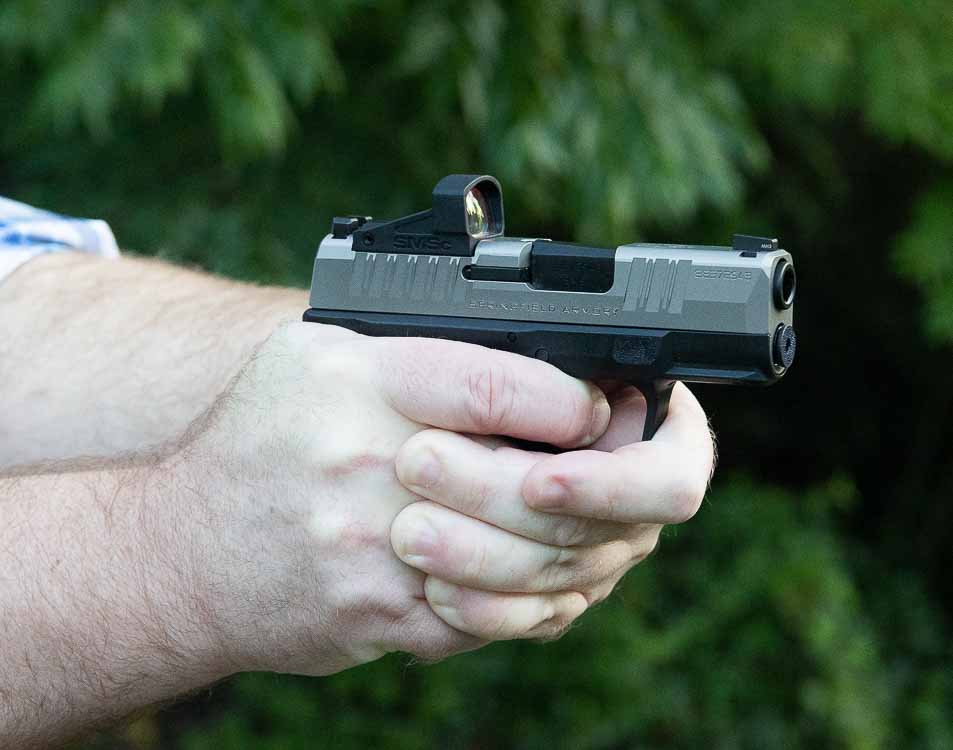
Determined to cut through marketing lingo, a Springfield man developed a new open source project intended to offer objective testing data on red dot sights for self-defense.
A local resident with a history of solving unique engineering problems with modern technology, Richard Johnson developed the Hellcat Optics Project as a way to determine the usefulness of reflex sights on common defensive handguns. While many people debate about gun control, few would argue against the individual’s right to self-preservation. And that, said Johnson, is where his project comes in.
Rapid Self-Defense
“If we assume that a peaceful citizen in his home or going about his business during the day has the right to live unmolested, then we must also assume that he or she has a right to stop any attack upon his or her person,” said Johnson. “Using reasonable force within the confines of well-established law allows a man or woman to use deadly force – such as a handgun – to end a violent attack when there is a reasonable belief of being killed by the attacker.”
“So, doesn’t it make sense that we should provide the tools to do so that both increase the ability to stop the attacker and decrease the possibility of harming a bystander?” Johnson continued. “A red dot optic allows for just that – a lawfully armed citizen is more likely to hit, and only hit, the violent felon who is trying to kill them.”
Red Dot Sights and the Hellcat
According to Johnson, the Springfield Armory Hellcat is one of several micro-compact pistols that are popular for concealed carry. The Hellcat uses a slide with a specially machined area that allows a reflex sight to mount directly to the slide without the need for any adaptor or plate.
Research shows that when shooters are given equal amounts of training, those with the red dot sights are both more accurate and faster than shooters who use traditional iron sights. For this reason, optics like these are very popular in shooting competitions as well as for defensive use. In fact, a recent study showed that more than 10% of all police departments in the nation either issue or authorize patrol officers to use red dot sights on their duty pistols.
“Cops have started the transition that law-abiding citizens began more than a decade ago,” said Johnson. “Soon most departments – even those that are cash strapped – will make the move as the use of a red dot sight reduces the agency’s exposure to high liability lawsuits”
About the Hellcat
The handgun used in this testing is the Springfield Hellcat. It is a micro-compact defensive pistol chambered in 9mm. A standard magazine holds up to 15 rounds. While the gun has a number of highly desired features, one of the most obvious is the support of red dot sights from the factory.
Some companies require after-market slides or adaptors to add an optic. These cost the consumer additional money in addition to introducing potential failure points in the system. As the Hellcat can use a reflex sight out of the box, those issues are not a concern.
For the purposes of this article, the term “red dot sight” and “reflex sight” are used interchangeably. The terms refer to a supplemental aiming system that mounts to the top of the gun. The system uses a nearly-clear pane of glass or polycarbonate that superimposes a bright red aiming dot over the target. It eliminates many of the issues related to parallax and head alignment while increasing the speed at which a person can aim the handgun.

